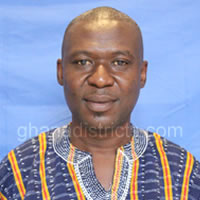Relevant Data
Location & Size
The Cape Coast Metropolitan is bounded on the south by the Gulf of Guinea, west by the Komenda / Edina / Eguafo /Abrem Municipal, east by the Abura/Asebu/Kwamankese District and north by the Twifu/Hemang/Lower Denkyira District. The Metropolis covers an area of 122 square kilometers and is the smallest metropolis in the country. The capital, Cape Coast, is also the capital of the Central Region.
Topology & Drainage
The landscape of Cape Coast Metropolis is dominated by batholiths interspersed with valleys. Located in the valley are several streams, the largest of which is the Kakum. Many of the steams end in wetlands and the Fosu Lagoon at Bakaano. The wetlands serve as barriers to physical development. In the northern parts of the district, however, the landscape is generally low lying and is suitable for the cultivation of various crops.
Climate & Vegetation
The Cape Coast Metropolis is located in the littoral anomalous zone of Ghana which makes the municipality experiences high temperatures year round. The hottest months are February and March, just before the main rainy season, while the coolest months are between June and August.The invariability in climate in the municipality is influenced more by rainfall than temperature. the municipality is influenced more by rainfall than temperature. Cape Coast experiences relatively high temperatures throughout the year and is humid. Natural vegetation consists of shrubs, grasses and a few scattered trees.
The original dense vegetation has been displaced, as a result of clearing for farming, charcoal burning, bush fires and other human activities. However, the northern part still has secondary forest, occurring due to the lower population densities. The municipality has a double maximal rainfall, with annual rainfall total between 750 mm and 1,000 mm.The present vegetation of the metropolis consists of shrubs of about 1.5 meters high, grass and a few scattered trees.
The original vegetation of dense shrubs, which the rainfall supported, has been replaced by secondary vegetation as a result of clearing for farming, charcoal burning, bushfires and other human activities.Presently, trees are less densed in the area compared with the interior forest areas, except the occasional acacia plantations and bamboo shrubs found in a few sanctuaries not yet completely deforested. The northern parts of the metropolis are an exception to what has been described above. Here, secondary forest can be found and have survived mainly due to tower population densities and relatively little disturbance of the ecosystem.
The original vegetation of dense shrubs, which the rainfall supported, has been replaced by secondary vegetation as a result of clearing for farming, charcoal burning, bushfires and other human activities.Presently, trees are less densed in the area compared with the interior forest areas, except the occasional acacia plantations and bamboo shrubs found in a few sanctuaries not yet completely deforested. The northern parts of the metropolis are an exception to what has been described above. Here, secondary forest can be found and have survived mainly due to tower population densities and relatively little disturbance of the ecosystem.
Geology & Soil
The rock type of the district is of the Birrimian formation and consists of schist and introduced granites and pegmatite. The hills are generally overlain by sandy and clayey silts while the valleys are overlain by clayey gravel with lateritic soils exposed in a number of areas.
The dominant soils of the Metropolis are lateritic in nature and are derived mainly from the weathered granite and schist. Along the slopes the soil profiles have top soils with depths of about 0.33m while on the hills, loose to dense sandy soil of about 2.36m in depth frequently occur. In the valleys and swampy areas, find sandy deposits occur extensively.
Date Created : 11/30/2017 2:55:32 AM






 facebook
facebook twitter
twitter Youtube
Youtube TOLL FREE 0800 430 430
TOLL FREE 0800 430 430 +233 593 831 280
+233 593 831 280 GPS: GE-231-4383
GPS: GE-231-4383 info@ghanadistricts.com
info@ghanadistricts.com Box GP1044, Accra, Ghana
Box GP1044, Accra, Ghana